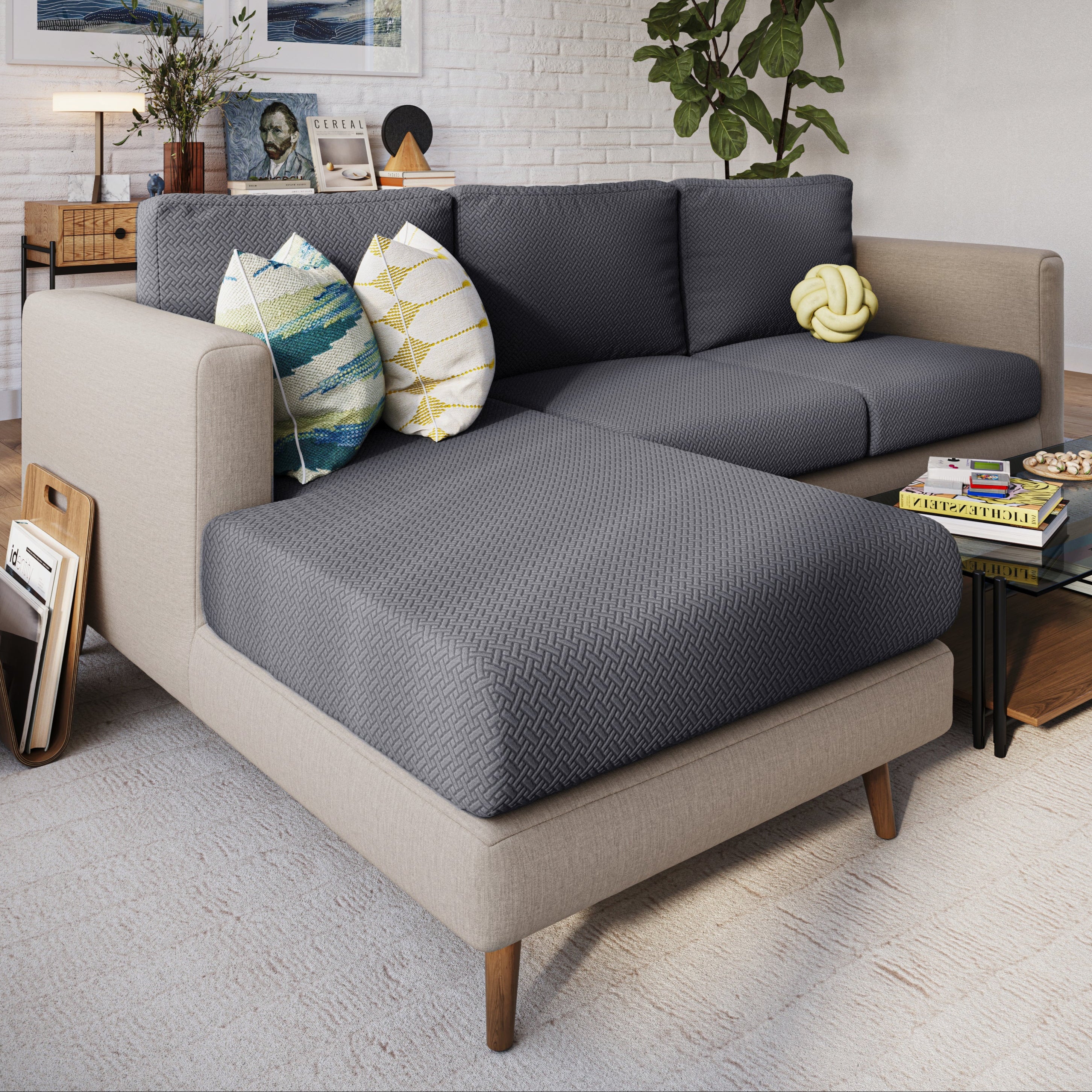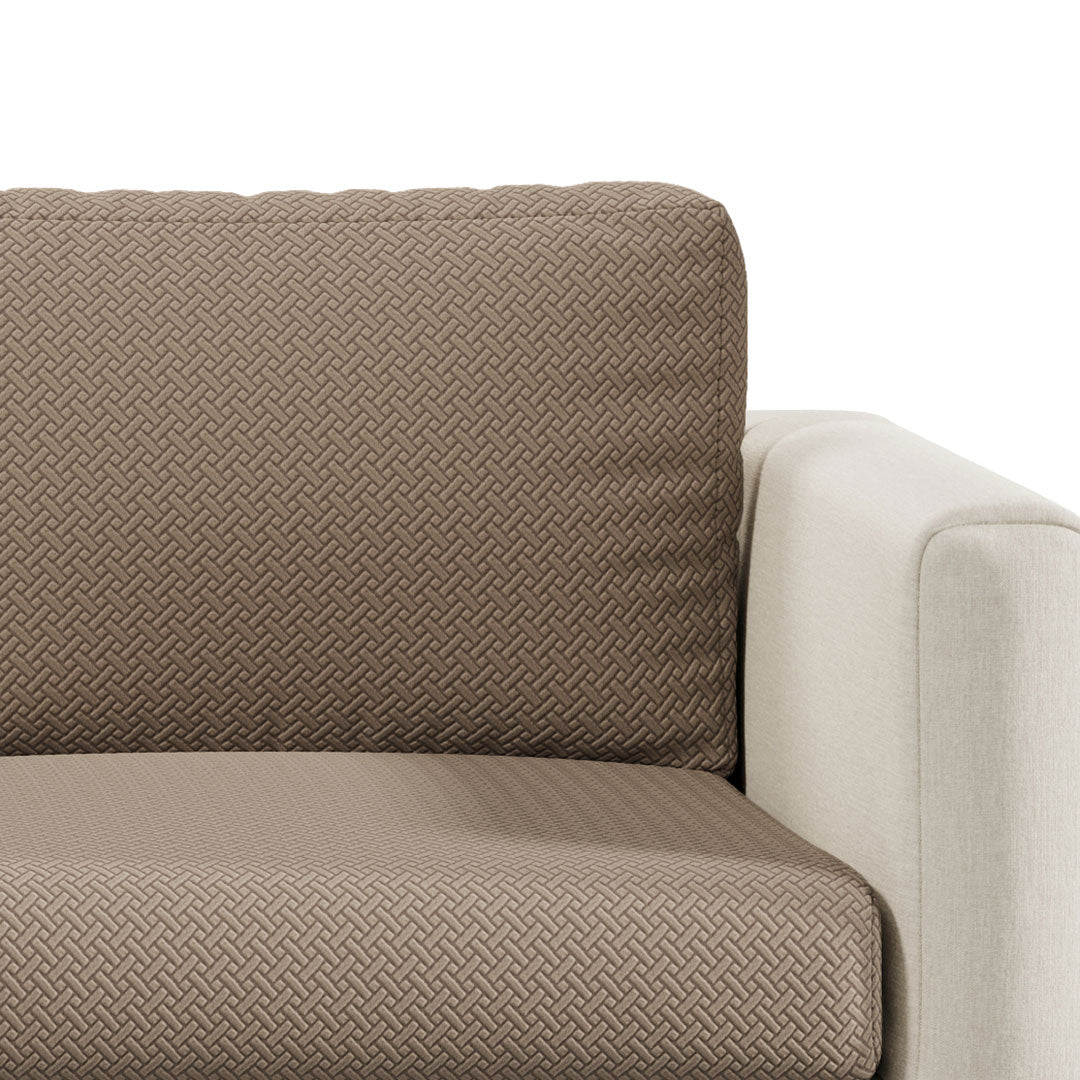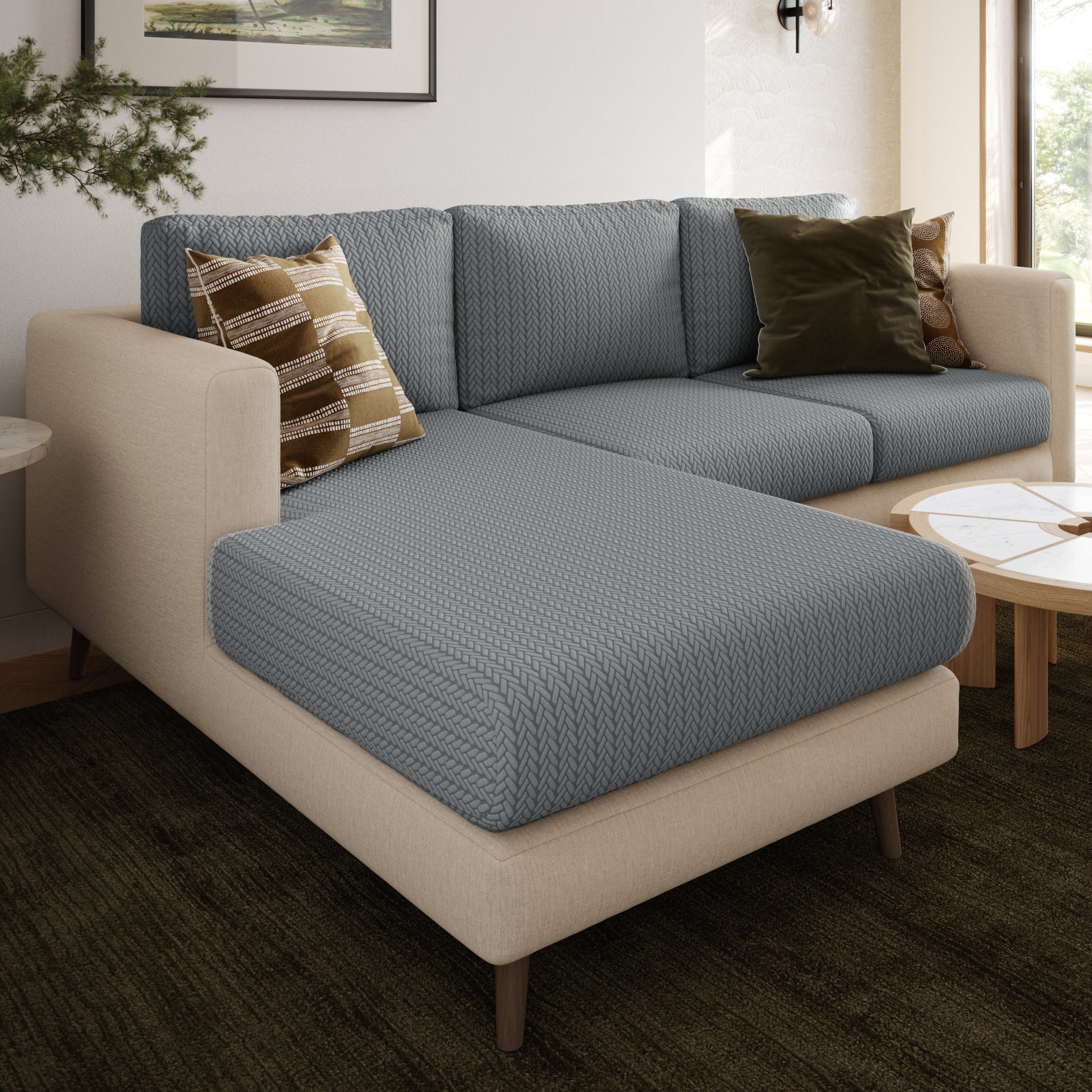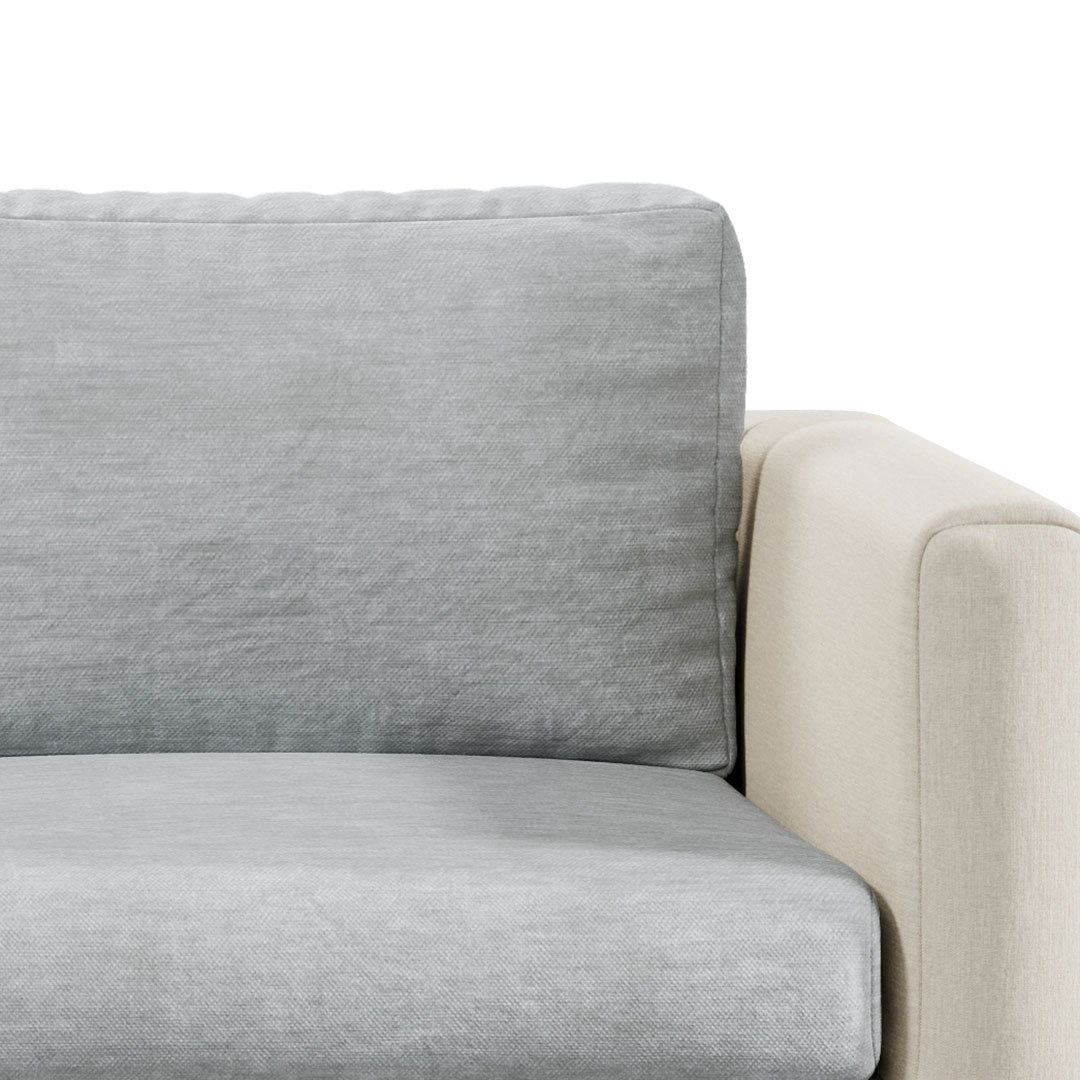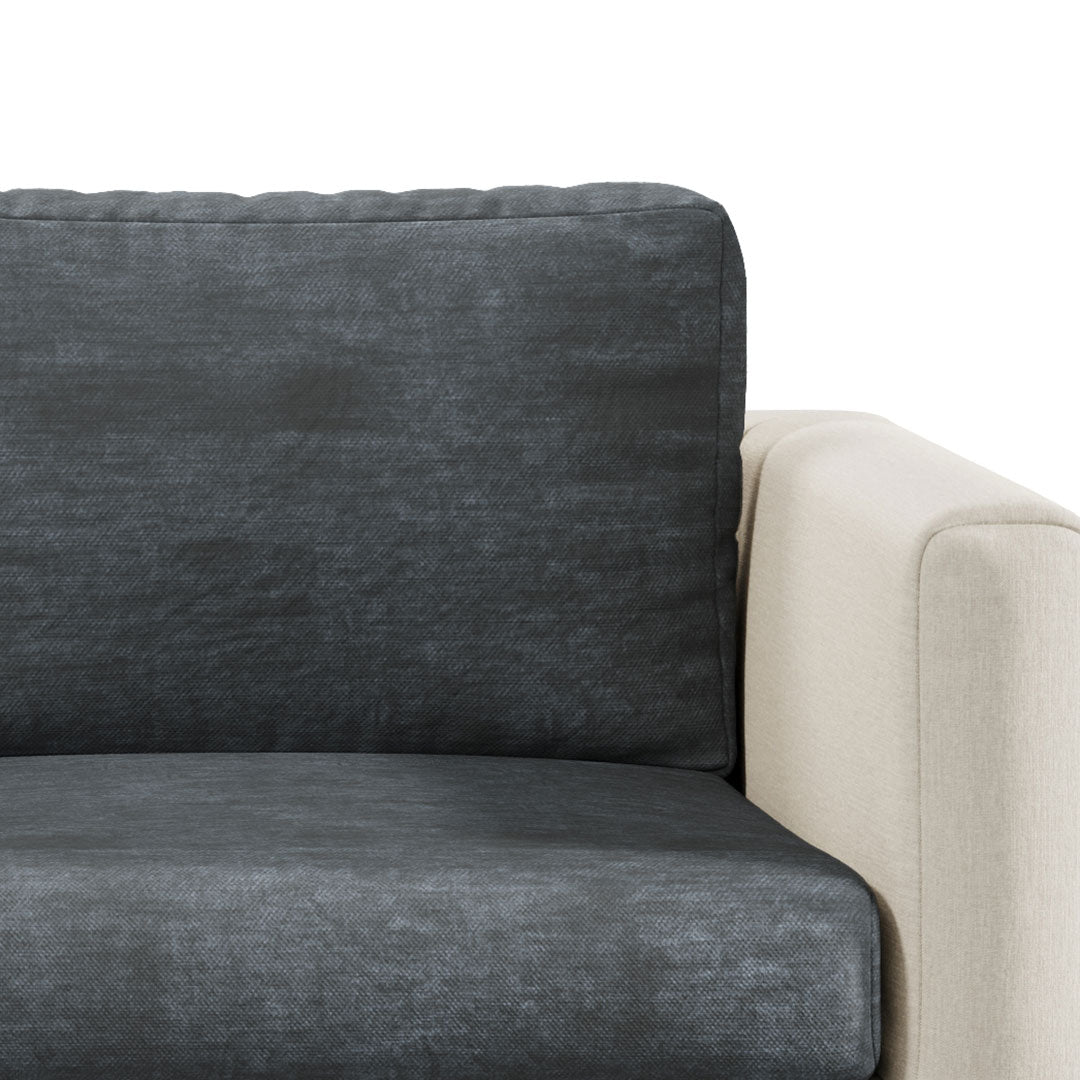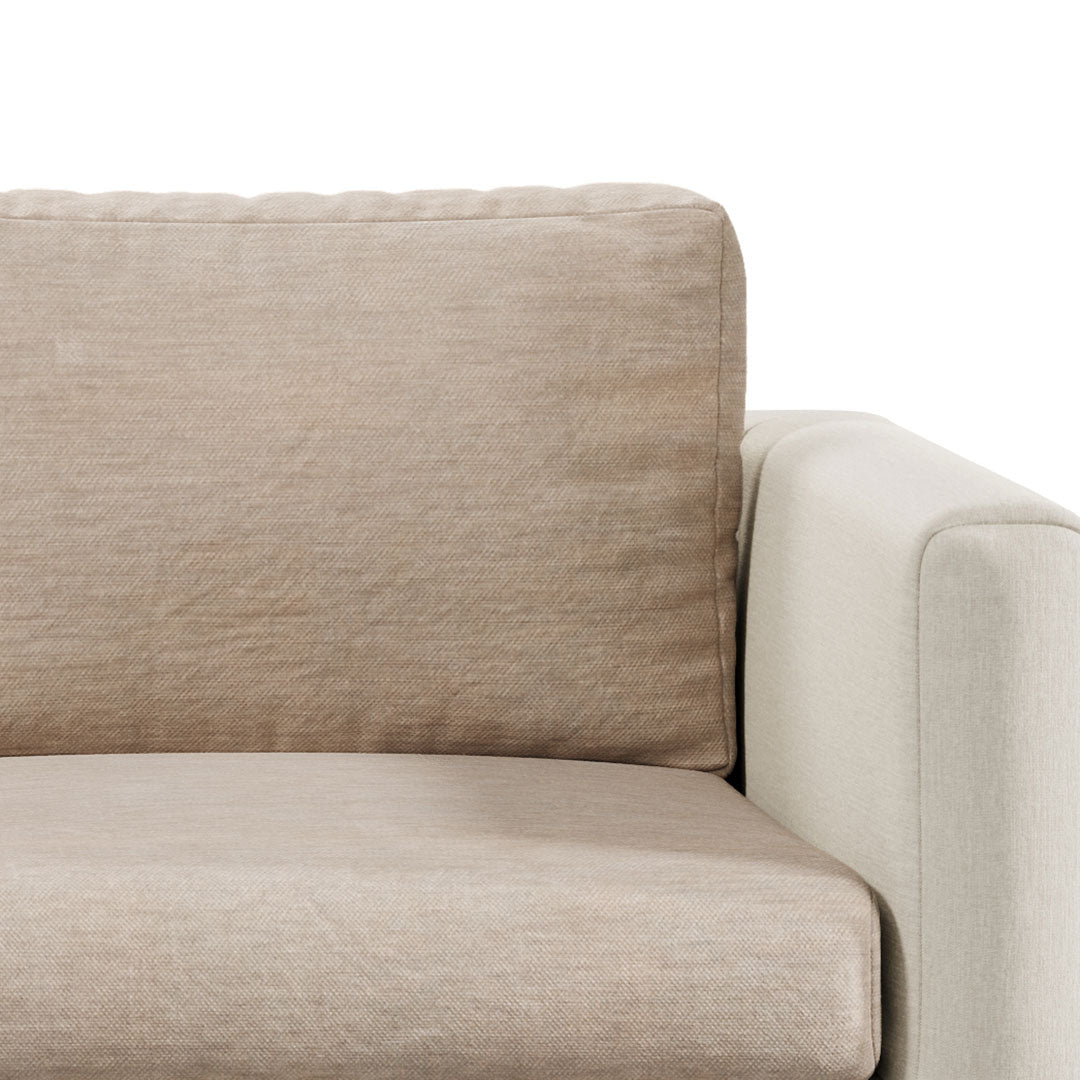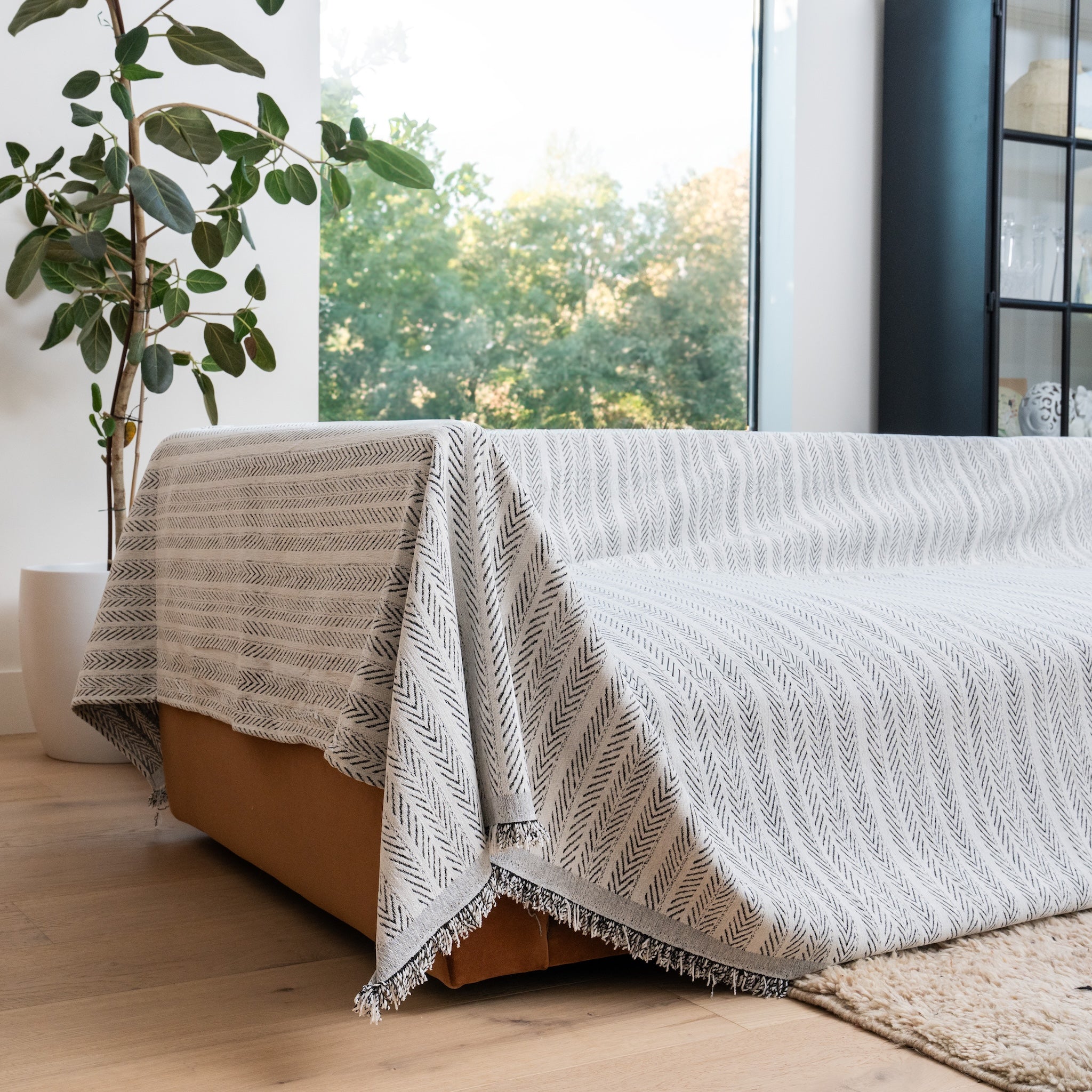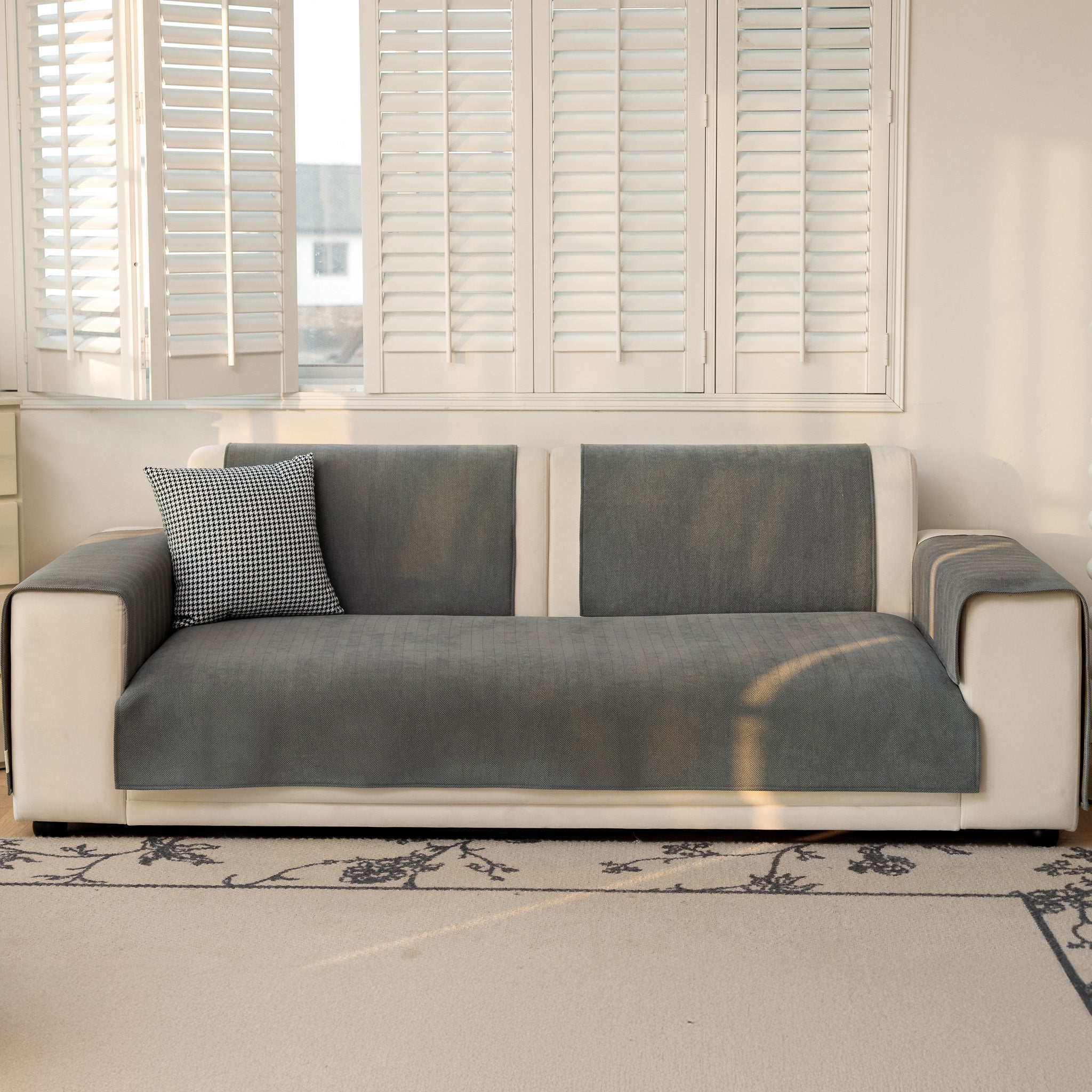Sofa covers play a big role in our living spaces and furniture. They serve not only as an aesthetic enhancement but also protect our sofas from everyday wear and tear, accidental spills, and pet hair.
Keeping them clean is important for maintaining both their functionality and visual appeal. However, improper washing methods can lead to discolored, shrunken, or damaged sofa covers that no longer serve their purpose or fit correctly.
The challenges often associated with washing cushion covers can make this task daunting. Different fabrics require different care, certain cleaning products may be harmful, and even the method of drying can significantly impact the result.
Without the proper knowledge and techniques, a simple cleaning endeavor can inadvertently ruin your beloved sofa covers. We’re going to go over a comprehensive guide to washing sofa cushion covers and outline important do's and don'ts to help you do this task with confidence and ease.
Read on to learn more about how to clean couch covers safely and effectively!
5 Don’ts of Washing Couch Covers
1. Don't Assume All Covers Are Machine Washable

Can you wash couch cushion covers in a washing machine? Not always!
A common mistake many people make is assuming that all sofa covers are machine washable. The truth is that most of them are machine-washable (including ours), but not all materials do well in washing machines.
Sofa covers made from delicate fabrics like silk, wool, or certain types of synthetics may suffer irreversible damage in a washing machine. They might shrink, fray, or even completely lose their shape.
First, identify the fabric type of your sofa cover before deciding on a cleaning method. You can usually find this information on the product tag, or if you purchased the sofa cover yourself, on the product information sheet.
If the material is marked as non-washable, professional cleaning may be a safer option. Risking machine washing non-washable fabrics can lead to more harm than good.
| 📢 How to Wash Sofa Cushion Covers Without Shrinking? |  |
2. Don’t Use Bleach

Bleach may seem like a tempting solution to tackle stubborn stains on your sofa covers, but it's generally not the best choice. The oxidizing properties in bleach can be extremely harsh on most fabrics.
Using bleach can lead to discoloration, leaving your once vibrant sofa covers looking dull and faded. For colored or patterned covers, the impact can be even more dramatic.
Consider using gentle alternatives for stain removal. Before washing your couch covers, you can treat stains with a solution of mild detergent and water. You could also opt for commercial stain removers that are specifically designed to be fabric-friendly.
The goal is to prolong the life and maintain the appearance of your sofa covers, and the use of bleach is often counterproductive to this goal.
| 🤍 How to Clean Your White Couch |  |
3. Don't Dry Clean Without Checking the Label

Dry cleaning, often seen as the one-stop solution for all fabric care needs, isn’t usually suitable for sofa covers. Certain materials, particularly synthetics like polyester or certain types of microfiber, may react negatively to the chemicals used in the dry cleaning process. The result could be a change in texture, color fading, or even shrinkage. This can leave you with a cover that no longer fits your sofa properly.
Check the care label for instructions to see if dry cleaning is an option for your sofa covers. If the label indicates that dry cleaning is not suitable, it's best to avoid this method. Instead, consider hand washing or machine washing on a gentle cycle, as specified by the label. Taking these precautions can help you maintain the quality and longevity of your sofa covers.
❗ Tip: You should memorize the abbreviations used on the manufacturer’s tag to determine how to wash your couch covers. Machine-washable products have a W (water) code, while those suitable for dry cleaning are marked with an S (solvent). Furthermore, sofa covers marked with a WS are suitable for both water- and solvent-based cleaning, and those with an X require professional treatment.
4. Don’t Wash Different Colored Covers Together

Washing sofa covers of different colors together may seem like a time-saving strategy, but this approach could end up causing more harm than good.
This is because of the possibility of color bleeding, where the dyes from one fabric transfer to another during the washing process. This can result in your light-colored sofa covers taking on the hues of the darker ones, leading to discoloration and an overall mismatched appearance.
Wash your couch cushion covers in separate loads based on their colors to avoid this issue. Light colors such as white, beige, or pastel shades should be washed together, while darker colors like navy, black, or burgundy should be grouped separately.
You're going to be much better off playing it safe when it comes to washing different-color sofa covers.
❕ Tip: To additionally protect the colors and fabrics from damage, turn your machine-washable sofa cushion covers inside out first.
5. Don't Ignore Small Repairs Before Washing

Ignoring small repairs before washing is another common pitfall that can lead to significant damage to your sofa covers. Small rips, tears, or loose threads may seem insignificant, but they can easily worsen during the washing process.
The agitation from the machine or even hand washing can cause these minor issues to become bigger problems, and you will have to buy new couch covers.
Before you wash your sofa covers, inspect them for signs of damage. Look for loose threads, small tears, and any other minor issues that might worsen during the process.
If you find any, take the time to repair them before washing them. Taking care of these issues beforehand will not only prevent further damage during washing but will also help extend the lifespan of your sofa cover.
| 🛋️ Understanding Your Couch’s Lifespan |  |
5 Do’s of Washing Sofa Cushion Covers
1. Do Read the Label Thoroughly

Reading the care label on your sofa covers may seem like a no-brainer, but it's an important step that's often overlooked. These labels are detailed instruction manuals for the care and maintenance of your fabric.
Ignoring these instructions can result in irreversible damage to your sofa covers, such as shrinkage, color fading, and fabric distortion.
The care label usually provides information about the washing method, water temperature, the type of detergent to be used, and drying instructions. Some labels might even include specific instructions for stain removal.
Understanding and following these guidelines will help you maintain the quality, fit, and appearance of your sofa covers for as long as possible.
✂️ Tip: Don’t cut labels off and throw them away, as they will always suggest the best way to wash your couch cushion covers.
2. Do Pre-Treat Stains

Stains are an inevitable part of life, particularly when it comes to furniture coverings like sofa covers. While it might be tempting to toss a stained sofa cover directly into the wash, it's better to pre-treat stains before washing. This is because the heat and agitation from the washing process can set stains, making them more difficult to remove later.
Before washing your sofa cover, inspect it for any visible stains. Once identified, pre-treat these areas using a gentle, fabric-safe stain remover. Apply the stain remover to the affected area and gently work it into the fabric with a soft brush or cloth. Let it sit for a few minutes to allow the stain remover to break down the stain. After pre-treatment, you can proceed with washing the sofa cover. Pre-treating stains not only increases the chances of completely removing them but also helps to maintain the overall look and integrity of your sofa covers.
| 🍷 Quick Fixes for Removing Stains from Couches |  |
3. Do Use a Mild Detergent

The choice of detergent can significantly impact the longevity and vibrancy of your sofa covers. Using a strong detergent might seem like the best way to get your covers clean, but these often contain harsh chemicals and can damage the fabric. They can cause color fading, break down the fabric fibers, and even lead to skin irritation when you come into contact with the treated covers.
Instead, use a mild detergent when washing your sofa covers. These are typically free from dyes, perfumes, and other harsh chemicals, making them a safer choice for your fabric. Mild detergents can effectively clean your covers without the risk of damaging them or causing discomfort to sensitive skin. By choosing the right detergent, you can make sure you clean the sofa cover well without compromising on the health and appearance of your sofa covers.
📞 Tip: If you find it challenging to choose the best detergent to wash your couch cushion covers, you can contact the manufacturer for advice.
4. Do Wash on a Gentle Cycle

When it comes to washing sofa covers, a gentle touch is often the best approach. Regular or heavy-duty cycles may seem like the best choice for a thorough clean, but these settings can be damaging to your sofa covers. They can cause undue stress to the fabric, leading to fraying, pilling, and even tears. This is especially true for covers made from delicate or loosely woven fabrics.
You should always opt for a gentle or delicate cycle when washing your sofa covers. This cycle uses less agitation and a slower spin speed, reducing the risk of damaging the fabric. Using cold water can help prevent color fading and reduce the chance of shrinkage as well. If your washing machine doesn't have a gentle cycle, consider hand washing as an alternative. Preserving the integrity and longevity of your sofa covers often comes down to being gentle and attentive during the washing process.
❄️ Tip: To prevent your sofa cushion covers from shrinking or damage, wash them in cold water.
5. Do Dry Properly

Drying your sofa covers is an important step to get right to avoid any unwanted damage. Just like washing, incorrect drying methods can lead to problems like shrinkage, wrinkling, and fabric damage. Many people make the mistake of placing their sofa covers in a hot dryer, thinking this will speed up the process. However, the high heat can cause fabrics to shrink and colors to fade, leaving your sofa covers looking far from their best.
Use a light tumble setting or air dry your sofa covers whenever possible. This method is not only gentler on the fabric, but it also helps to maintain the shape and fit of the covers. Ironing should generally be avoided, but if necessary, use a low setting and always iron on the reverse side of the cover.
In summer, you can hang up your washed couch cushion covers outside, and they should dry relatively quickly. Just remember to keep them in the shade so that the colors do not fade.
| ☀️ Best Sofa Covers for Summer |  |
How to Wash Leather Couch Cushion Covers?
Leather sofa covers can be tricky to keep clean. First, you should never ever think about machine-washing and dry-cleaning them, as you can easily harm them this way!
To keep them in good condition, first vacuum your leather covers to get rid of any dirt, debris, or hair. Then, spray a leather cleaner on a dry cloth and wipe down the covers carefully.
To achieve an even better effect, spray leather conditioner on a cloth and spread it evenly on the covers. Remember to let the sofa covers fully dry before you use them again.
What’s more, you can consider covering your leather sofa with easy-to-clean removable cushion covers.
| 🤎 The 7 Best Couch Covers for Leather Couches |  |
How Often Should You Wash Couch Cushion Covers?
The exact recommended frequency of washing sofa cushion covers can vary depending on the fabric and specifications provided by the manufacturer.
Nonetheless, on average, it is suggested that you should thoroughly vacuum your sofa once a week and deep wash your couch cushion covers at least twice a year.
However, this frequency may also depend on your specific household—if you have pets or little children, your sofa will probably get dirty faster, so you should wash the covers more often.
Also, if an accident happens and you need to get rid of urine smell, blood stains, or other problematic damage, don’t postpone the washing, as time is crucial for the effectiveness of the cleaning process.
| 🩸 How to Get Blood Out of a Couch Cover |  |
How Can You Wash Couch Cushion Covers? - Conclusion
So, can you wash sofa cushion covers easily and without worrying about them? Yes, if you follow a few simple rules!
The upkeep and maintenance of your sofa covers don’t need to be a dreaded task. By following the do's and don'ts we've outlined, you can ensure that your sofa covers maintain their beauty, comfort, and durability for years to come.
Each step plays a critical role in preserving the quality of your covers. Always prioritize the instructions on how to wash your couch cushion covers provided on the label, as these are designed specifically for the fabric type of your product.
Proper care and maintenance of your sofa covers extend beyond simple cleanliness. It's about preserving the aesthetic appeal of your living space, prolonging the lifespan of your covers, and ultimately, getting the most out of your sofa covers.
To make your life easier, order our low-maintenance couch cushion covers made with superb materials and advanced technologies. They are amazingly resistant to stains, spills, and pet hair, and they’re adjusted for machine washing, so keeping them clean will require little time and effort on your part.
Take a look at our wide range of high-quality sofa covers—many of them are on sale right now!
